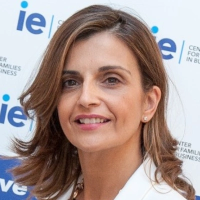How Business Families Can Invest for Social Impact

“My great-great grandfather spent the first half of his life making money, and the second half of his life, giving it away - and the family has continued a strong tradition of both business and philanthropy. I see impact investing as a natural continuation of those themes and those family values” – Justin Rockefeller
For generations, business families have been major players in philanthropy, funding projects that benefit society in different fields including science, education, and the arts. Now, these “natural philanthropists,” (as they are sometimes called) are embracing new practices that blend wealth management and social impact; one of them being impact investing.
Impact investing broadly refers to investing with the intention of generating a positive social impact alongside a financial return or by applying principles and practices from the financial sector to the funding of social projects. For example, the Ford and the McArthur families were early adopters of this approach, pioneering social investments in affordable housing in the 1980s. Anecdotal evidence points to the term being coined at a Rockefeller Family Foundation event in 2007. Both media reports and recent academic work highlight business families as key players in this burgeoning field.
That said, impact investing isn’t a one-size-fits-all solution for business families. The field offers different strategies, each with its own set of complexities and dilemmas. We have simplified these into four key questions to help families navigate their choices.
- What is the main objective of the investment? Is it to primarily generate a positive impact for society and/or the environment alongside financial returns or capital recovery (impact-first) or is it to generate financial returns alongside a positive impact for society and/or the environment (finance-first)?
- What is the desired scale of the generated impact? Is it to fund solutions that are tailor-made to the various needs of local communities (local impact) or standardized solutions made to be replicated on a broad scale (global impact)? For example, investing in solutions such as treatments for wide-spread diseases or climate change solutions contribute to global impact while investing in girls’ education in a region of West Africa would contribute to a more local impact.
- What is the main anchor for decision-making? Are decisions made based on the specific needs of the targeted beneficiaries (need-based), or are they driven by what the investor believes is the most efficient approach (tool-based)? For example, some investors may employ blended finance across all their investments, believing that the combination of private and public capital ensures the success of their impact initiatives. In contrast, other investors may want to first assess the needs of the targeted beneficiaries before choosing the appropriate financial tool, whether it be debt, venture capital, or blended finance.
- How should the generated impact be measured? Through qualitative methods that capture the beneficiaries’ experiences (narratives), or based on quantitative metrics (e.g., Social Returns on Investments (SROI), cost-benefit analysis)?
To help business families navigate these complex decisions, we’ve developed a framework (See Figure 1) aimed at identifying the impact investing strategy that best aligns with their unique traits and goals. This framework is grounded in behavioral insights and draws on established research into the motivations and perspectives of business families. It is based on two key questions:
- Is the family primarily focused on their past and existing assets (backward-looking), or on future potential assets, the next generation, and the legacy they will leave (forward-looking)?
- Is the family more concerned with maintaining their reputation within their local territory (internally-oriented), or with responding to global trends (externally-oriented)?
These two key dimensions—whether a family is focused on the past or the future and whether they are internally or externally oriented—define four distinct types of business families, each with unique motivations and perspectives. By evaluating these factors, families can identify the impact investment strategy that best suits their values and goals. We’ve captured these insights in our model, illustrated in Figure 1, and which we develop below.
The Assets-Focused Families
(Backward-looking and externally-oriented; motivation for engagement: taking part in a global movement).
These families are primarily focused on preserving their existing wealth, yet they are also particularly attentive to global trends and global issues. As the market increasingly takes on environmental and societal challenges—encouraged by regulators and consumers—they may feel the urge to join the movement but in a way that still safeguards their assets.
As a result, they would best benefit from a “finance-first” impact investing approach, investing in projects that make a positive impact on society while generating a financial return. As the principal of a European family office put it: “If you do it [impact investing] the right way, you can achieve a return set to market.”
Because their main driver is to show their commitment to a broader movement, they may not want to focus on precise social impact measurement (no impact measurement preference). They might also find a good fit in adopting a “tools-based” approach, investing in standardized and scalable solutions. This strategy would allow them to be part of something bigger, offering the potential for widespread impact and visibility that local actions alone cannot achieve. Practically speaking, a good option for these families is to invest in public funds that back large-scale projects incorporating social and environmental considerations while delivering market-rate returns to investors (i.e., ESG-compliant funds).
The Long-Lived Families
(Forward-looking and internally-oriented; motivation for engagement: continuing a tradition of doing good).
These families are deeply committed to ensuring their long-term prosperity and legacy, including the next generation in their plans. At the same time, their primary focus remains on their local territory rather than global trends. They are closely connected to their communities, upholding a reputation of giving back to the places that have supported their rise. This dedication often crowns them as “local heroes” in their hometowns (Breeze, 2009).
As a result, these families would most benefit from an “impact-first” impact investing approach that puts the needs of their community before financial returns. Quoted by Sullivan (2015), the chief executive of a family foundation illustrates this local attachment: “As with many families, place matters to them. It’s where this business is from. The kinds of impact they can enact — they can see and touch it.”
Because these families are also concerned with involving the next generation in the decision-making of the family, they would also benefit from a “tools-based” approach, especially if it appeals to the younger generation who are more and more inclined to use business principles in social initiatives. At the same time, because they understand the complexities of local problems, they are a great fit to use a “needs-based” approach, which they can combine with the newer "tools-driven" methods to make a localized impact.
To show everyone, especially the younger ones, that this approach really works, they can also opt for quantitative metrics to assess their social investments. As an expert put it, "[These] families are being just as rigorous in their local philanthropy as those who cast their net wider […] Many are engaging in the same type of impact investing — meaning that they measure what their dollars accomplish — that is at the heart of much global giving. And thinking in those terms, even using that phrase, is keeping younger family members engaged” (Sullivan, 2015). Practically speaking, a good option for these families is to engage in venture philanthropy where donations are treated like investment and principles from the traditional finance are used to monitor the social project.
The Entrepreneurial Families
(Forward-looking and externally-oriented; motivation for engagement: strategic innovation).
These families have their eyes on their future and their ears to the ground. Their long-term horizon and their awareness of market trends compel them to see impact investing not just as a way to meet stakeholder expectations, but also as a critical strategy for long-term family sustainability.
A good impact investing option for these families is to find an optimal balance between impact-first and finance-first investments, pushing the boundaries of this field on both sides. “We are taking a total portfolio approach. We think about this investing very rigorously and pay a lot of attention to our risk-adjusted returns because this is not our play money, this is everything” (Liesel Pritzker Simmons, impact investor, in Foley, 2016).
These families would also benefit from impact investments that tackle global issues with a “tools-based” approach focusing on the scalability of their social impact and using quantitative metrics to assess their progress. “We want to know what the return is and what are the top three impact key performance indicators. One extra dimension we look at with a catalytic investment is: Did it do what it said it was going to do, and did it scale?” (Liesel Pritzker Simmons, impact investor, in Sullivan (2021)).
Practically speaking, a good option for these families is to engage in direct investments in social enterprises that aim to generate tangible and measurable social impact while striving for financial self-sustainability and growth.
The Traditional Families
(Backward-looking and internally-oriented)
This type of family falls outside the scope of our framework due to its distinct characteristics. These families tend to prioritize control and stability over their current assets rather than future ones and are unlikely to engage with global trends. As a result, the uncertainty associated with impact investing may not align with their preferences. In a candid interview, a member of a Singaporean business family summed it up: “I’m not a millennial who needs to feel good about making money; let’s be pragmatic. If you want to change the world, use the philanthropic foundation where returns aren’t a concern. That’s my approach” (UBS, 2020).
This framework, we hope, can help business families and their advisors to reflect on their purpose and what matters to them before deciding on whether they want to engage in impact investing and what would be the most fitting strategy in terms of the objective of the investment (finance-first or impact-first), the scale of the generated impact (through local vs. standardizable and scalable solutions), the anchor for decision-making (close to the beneficiaries’ needs or emphasizing business tools for social impact) and impact measurement (using either narrative or quantitative methods).
Things to Consider
In conclusion, we crafted a few questions that business families can use in discussion with their financial advisors and investment committees, to understand what is important to them as a family and what type of impact investing strategy they would be a great fit for.
- What is our priority: preserving our existing assets (backward-looking), or taking risks to ensure our family’s long-term prosperity (forward-looking)?
- Do we have a next generation prepared to carry on the family legacy, and are we open to involving them in family decision-making (forward-looking)? Or are we more focused on the present due to family structure (absence of next generation) or objectives (backward-looking)?
- How willing are we to adapt to market trends and respond to global shifts influenced by regulators and consumers? (a high willingness shows a strong external orientation)
- To what extent are we grounded in our local territory and communities? (a high level indicates a strong internal orientation)
Figure 1: Different impact investing strategies based on business families’ unique characteristics and perspectives

Note: Selecting a particular impact investing strategy doesn’t definitively classify a family into a specific category. However, families exhibiting traits linked to certain types—assessed through qualitative questions based on a well-established typology of business families (Nason et al., 2019)—are likely to align more closely with corresponding impact investing approaches. By applying this framework and engaging in detailed discussions with financial advisors and impact fund managers, business families can better understand their positioning within this model.
References
Botha, F. (2024, June 16). Regenerative Visions For A Small Planet: Family Offices And Impact. Forbes. https://www.forbes.com/sites/francoisbotha/2024/06/16/regenerative-visions-for-a-small-planet-family-offices--impact/
Breeze, B. (2009). Natural philanthropists: findings of the family business philanthropy and social responsibility inquiry.
Brown, K., Wood, D., & Paetzold, F. (2019). Impact investing for the next generation: Insights from young members of investor and business families.
Cruz, C., Justo, R., & Roche, J. (2021). Engaging in a new field: Business owning families’ differential approach to impact investing. European Journal of Family Business, 11(1), 21-32.
Cundy, A. (2020, December 7). Next generation behind family offices’ ESG push. Financial Times. https://www.ft.com/content/dea5e5d1-8650-4819-aecc-699b612419aa
Duddy, E., Kwon, T., & Neghaiwi, N. (2022). Ten Ingredients for Impact Investing: Eight Families Share Their Recipes.
Gautier, A., Pache, A. C., & Santos, F. (2023). Making sense of hybrid practices: The role of individual adherence to institutional logics in impact investing. 44(9), 1385–1412.
Hand, D., Ringel, B., & Danel, A. (2022). Sizing the impact investing market. https://thegiin.org/research/publication/impact-investing-market-size-2022/
Hockerts, K., Hehenberger, L., Schaltegger, S., & Farber, V. (2022). Defining and conceptualizing impact investing: Attractive nuisance or catalyst? Journal of business ethics, 179(4), 937–950.
Marti, E., Fuchs, M., DesJardine, M. R., Slager, R., & Gond, J. P. (2023). The Impact of sustainable investing: A multidisciplinary review. Journal of Management Studies.
Murray, S. (2019, October 17). Rich millennials push to put family wealth into impact investments. Financial Times. https://www.ft.com/content/972adac6-d928-11e9-9c26-419d783e10e8
Nason, R., Mazzelli, A., & Carney, M. (2019). The ties that unbind: Socialization and business-owning family reference point shift. Academy of management review, 44(4), 846-870.
Risi, D., Paetzold, F., & Kellers, A. (2021). Wealthy private investors and socially responsible investing: The influence of reference groups. Sustainability, 13(22), 1-24.
Sullivan, P. (2015, July 17). When impact investing stays local. The New York Times. https://www.nytimes.com/2015/07/18/your-money/when-impact-investing-stays-local.html
Sullivan, P. (2021, April 2). An Argument for Investing Where the Return Is Social Change. The New York Times. https://www.nytimes.com/2021/04/02/your-money/impact-investing-social-change.html
UBS. (2019). Global Family Office Report 2019.
UBS. (2020). Global Family Office Report 2020.
Explore the Research
Engaging in a New Field: Business-Owning Families’ Differential Approach to Impact Investing European Journal of Family Business, 2021








